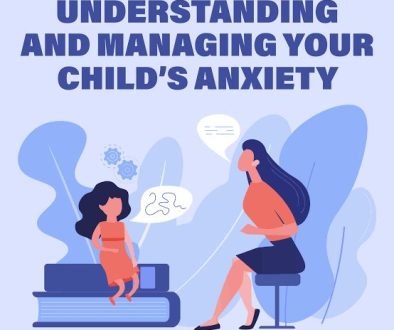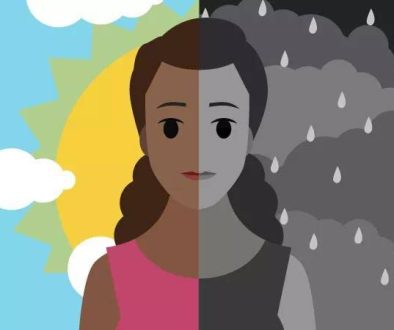Suicide prevention
Suicide prevention is a critical aspect of mental health care, as suicide remains one of the leading causes of death worldwide. Effective strategies for preventing suicide involve a comprehensive approach that addresses the complex emotional, psychological, and social factors contributing to suicidal ideation and behavior. Mental health care plays a vital role in identifying those at risk, providing the necessary interventions, and offering long-term support to individuals in crisis.
Warning signs of suicide
Recognizing the warning signs of suicide is one of the first steps in prevention. Some common signs include talking about wanting to die, expressing feelings of hopelessness, or making statements like “I feel like a burden to others.” Other indicators may include withdrawing from social activities, increased use of alcohol or drugs, drastic mood swings, or changes in sleep patterns. Individuals may also engage in risky or self-destructive behavior, such as reckless driving or substance abuse.
For some, suicidal thoughts can be hidden or expressed through more subtle means, such as giving away possessions or saying goodbye to loved ones. Mental health professionals are trained to recognize these signs and assess the severity of the risk.
The role of mental health care in suicide prevention
Mental health care professionals are on the front lines of suicide prevention. Therapy, counseling, and psychiatric interventions provide critical support to those struggling with suicidal thoughts. Cognitive-behavioral therapy (CBT) is one evidence-based approach that helps individuals reframe negative thought patterns and develop healthier coping mechanisms. Dialectical behavior therapy (DBT) is another therapeutic method that focuses on teaching individuals skills for managing intense emotions and reducing self-harm behaviors, both of which can be closely linked to suicide risk.
In addition to therapy, medication may also be necessary, especially for individuals with underlying mental health conditions such as depression, anxiety, or bipolar disorder, which are often associated with an increased risk of suicide. Antidepressants, mood stabilizers, and other psychiatric medications can help regulate mood and alleviate symptoms that contribute to suicidal ideation.
Crisis intervention and emergency care
For individuals in immediate crisis, access to emergency mental health services is crucial. Crisis hotlines, such as the National Suicide Prevention Lifeline, offer free and confidential support to individuals contemplating suicide. These services provide immediate intervention and can connect individuals with local mental health resources. In some cases, emergency hospitalization may be necessary to ensure the safety of the individual.
Crisis intervention teams, consisting of trained mental health professionals, may be called to provide assistance in acute situations, whether in hospitals, at home, or through law enforcement collaborations. These teams are equipped to de-escalate crises and assess the level of risk for suicide, providing a safe environment for individuals to receive care.
Community and social support
Community support plays an essential role in suicide prevention efforts. Family members, friends, coworkers, and others within a person’s social network can serve as a first line of defense by offering emotional support and connecting the individual with professional help. Schools, workplaces, and community organizations can also implement programs that raise awareness about mental health and suicide prevention.
Promoting open discussions about mental health can reduce the stigma surrounding suicide, encouraging individuals to seek help early. Programs that train people to recognize the signs of suicidal behavior and intervene—such as Mental Health First Aid—are valuable tools in equipping communities to support those at risk.
Addressing underlying factors
To effectively prevent suicide, it is essential to address the underlying factors that contribute to suicidal ideation. Mental health care providers work to manage conditions such as depression, anxiety, trauma, and substance use disorders. Additionally, addressing life stressors, such as unemployment, financial hardship, relationship problems, or social isolation, can reduce the pressure that might lead someone to consider suicide.
Preventing suicide also involves reducing access to means of self-harm. Research shows that limiting access to firearms, certain medications, and other lethal means can significantly decrease the likelihood of suicide attempts being fatal. Mental health care professionals often discuss safety planning with patients, which includes strategies to remove these means from the individual’s environment.
Suicide prevention in high-risk groups
Certain populations are at higher risk for suicide, including individuals with a history of mental illness, substance abuse, chronic pain, or trauma. Veterans, members of the LGBTQ+ community, and people with a history of childhood abuse or neglect are also more vulnerable. Suicide prevention efforts must take these risk factors into account and offer tailored interventions for high-risk groups.
Cultural sensitivity is key to reaching diverse populations effectively. Mental health care programs should be designed to meet the specific needs of different demographic groups, including addressing the unique barriers they may face in accessing care.
Reducing stigma around mental health and suicide
One of the most significant barriers to suicide prevention is the stigma surrounding mental illness. Many people who are struggling with suicidal thoughts may be reluctant to seek help due to fear of judgment, shame, or misunderstanding. Mental health care initiatives focused on reducing stigma can create a more supportive environment where individuals feel comfortable reaching out for help.
Public education campaigns that normalize conversations about mental health, encourage help-seeking behavior, and provide information about available resources can go a long way in preventing suicide. Reducing stigma also involves training healthcare providers and emergency responders to approach individuals in crisis with empathy, understanding, and non-judgment.
Long term care and follow-up
After an individual has experienced a suicidal crisis, long-term follow-up care is essential to prevent future episodes. Ongoing therapy, medication management, and support from mental health professionals help reduce the likelihood of recurrence. Establishing a safety plan with the individual, which includes coping strategies and emergency contacts, can provide structure and reassurance during difficult times.
Support groups for individuals who have survived suicide attempts or for those who have lost a loved one to suicide can offer a sense of community and reduce feelings of isolation. Long-term care also involves maintaining healthy relationships, building resilience, and developing life skills that help individuals manage stress and emotions.
In conclusion
Suicide prevention is a multi-faceted approach that requires the involvement of mental health professionals, community support systems, and public awareness campaigns. By recognizing the warning signs, providing immediate intervention, addressing underlying mental health conditions, and reducing stigma, we can save lives and offer hope to those who are struggling. Mental health care plays a crucial role in not only treating individuals in crisis but also in providing the long-term smupport necessary to prevent future suicide attempts.



